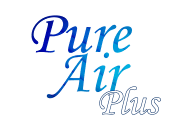ENERGY EFFICIENCY the catalyst.
CONDENSATION the precursor.
A house that is experiencing excessive condensation has the potential of becoming a breeding ground for molds. There are many thousands of types of molds, none of them desirable and all of them are preventable.
All that is necessary for mold to form is moisture and warmth. The stale heavy air in an energy efficient airtight house provides enough excess humidity and moisture for condensation to form and creates an ideal environment for mold to grow. Newer houses that are well insulated such as an R 2000 or now available the R 3000 houses can show symptoms almost immediately if the initial occupancy occurs during the heating season. Symptoms of the lack of fresh air can appear as condensation, forming on the windows, sills and sometimes even on the walls. Another symptom is a heavy stale air feeling caused from humidity and the lack of oxygen some people may even feel as if breathing is difficult.
Condensation forms when enough moisture is carried in the air and touches a surface that has a lower temperature, such as a window, this temperature change causes the moisture in the air to turn to water or if the surface is cold enough, to ice. Condensation as it changes to water soaks into surrounding woodwork, window sills or wall coverings and combined with the warmth of the house, becomes a breeding ground for mold. When this occurs, a musty smell may continually circulate in the heavy, moist, stagnant air.
These are typical symptoms of an airtight sick house and fixing any one of them does not necessarily cure the problem; you can mop up the water, wash off the mold if it has formed but this may just temporarily eliminate a symptom. To actually alleviate the problem or "cure the illness" you need to introduce fresh outside air; this can be as simple as opening a window like we do in late spring, early fall or summer if we have no air conditioning.
With this introduction of fresh air the symptoms will actually disappear by themselves. This solution is not always practical in extreme weather conditions such as cold winter months and mid summer if the house is air- conditioned. For these extreme weather conditions we need to have a more practical solution. It is possible to efficiently bring in just the right amount of fresh make up air needed for the indoor environment to be comfortable, symptom free and well oxygenated.
This can be accomplished with a "Plusaire®" residential ventilation system from Pure Air Plus that installs easily using a distribution system you already have, your furnace and it ductwork and functions automatically bringing in the exact amount of fresh air needed to make your indoor environment comfortable regardless of the type of activities and amount of people living in the house.
Interestingly the awareness of the health problems that can arise from living in an airtight house thathas condensation and stale heavy air is still relatively unknown to most people. Although we are all aware of the air pollution outside and the quality of our water, we have had little information to date about the danger in the condition of the air in our own homes.
Several studies are currently underway by both the Canadian and US environmental branches and links to these can be found on our resource page . In Canada there is a new organization called Healthy Indoors with an interactive discussion forum also available on the resource page. The state of California held the first North American Indoor Air Quality Symposium in 2000 and this is available on CD. Indoor air quality is finally receiving the attention it deserves and with it the recognition that many of the modern day symptoms people are complaining about may be caused in part by our own homes.

